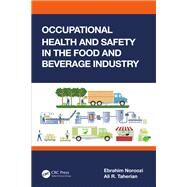Has beverage automation reached the Nth degree?
SKU proliferation contributes to growth in automation

The interpretations of the word “automation” have had many variations with broad scopes of intention. What is automation and what does it mean to beverage operators?
This is a basic premise that should be clarified before talking about automation. Why is automation important, and how far will its development and application progress during the next few decades to exemplify advantages and improvement?
Automation, in conjunction with robotics, has been used to define the replacement of manual labor tasks with machinery or systems. Relative to this basic idea, how many beverage operations currently are in an automation mode? A more important question is, how many beverage operations in processing, packaging, warehousing or distribution are candidates for any degree of automation?
In labor-intensive areas like production and warehousing, operations are more applicable to automated concepts and ideas. In the future, it is probable that an automated concept will be developed and applied in distribution or beyond.
A rationale for automated concept application involves many factors, including costs and return on application investment. Creating a rationale normally will depend on management philosophies regarding short- or long-term time periods considered for automated project approvals.
With the current high-frequency changes and complex variables that are involved, most automation projects tend to look at short-term rather than long-term payback. Time might not be as much of a factor as competition or the ability to reduce costs; however, the time consideration as well as practicability and necessity should be major items in automation project guidelines.
An important step when considering how far automation will go pertains to a beverage facility’s existing operating conditions. Beverage operators should conduct a comprehensive study that provides the opportunity to identify and select those segments of the operation that are prime candidates for labor reduction, higher output and overall savings.
Beverages are a highly volatile business and should be treated accordingly. That means constant, high-frequency changes with innovative approaches to packaging, machinery and products will demand some degree of automation. Using the approach that anything can be automated to some degree is one road; however, the necessity, practicability and cost parts of the justification equation also should be taken into account.
Another approach segments the various supply chain elements into detailed operation analyses, which might provide a better basis for the degree of automation that could be possible.
The initial step in the supply chain is processing and brewing beverages. Many semi-automated or fully automated systems are available and are computer controlled, regulated by an operator and provide the ability to view the overall process, detect malfunctions and correct problems. Modifications have been made over time and more will be forthcoming to achieve a fully automated process system for practically all beverages.
However, product processing has not reached the Nth degree of automation because new and modified products will continue to change and require automated system adaptations.
Preparing products for sale is the most vulnerable part of the supply chain. The high-frequency changes in beverage packaging challenge producers to make costly machinery and equipment configuration adjustments. Realistically, this constant change syndrome has possibly affected any accelerated move to automation.
Whether it is rinsing or palletizing, varying degrees of automation have been used and progress has been made. Although some line operations might be approaching the Nth degree of automation, much work is on the table for a totally automated packaging line.
Producers are not finished until the packaged product gets to the consumer. To cope with the on-going SKU explosion, automating the warehouse had to become a reality because high inventory costs are unacceptable and on-time deliveries are mandatory.
Although warehousing automation occurred more than 20 years ago, the practice has not become the norm for most beverage warehouse or distribution centers. It is believed that until inventory strategies change and SKU enlargement tapers off, reaching the Nth degree in beverage warehouse automation still will remain on the table.
Coupled with warehouse automation are the order picking, sorting and loading operations (distribution preparation), which have been automated with considerable success. But even with the advances to date, the warehousing and distribution preparation operations have a way to go before reaching the Nth degree.
Looking for a reprint of this article?
From high-res PDFs to custom plaques, order your copy today!








